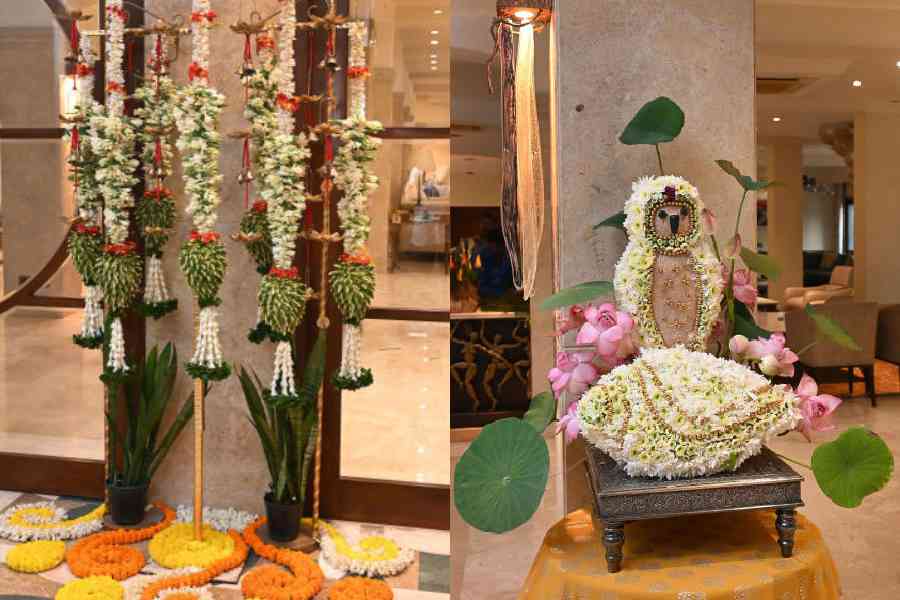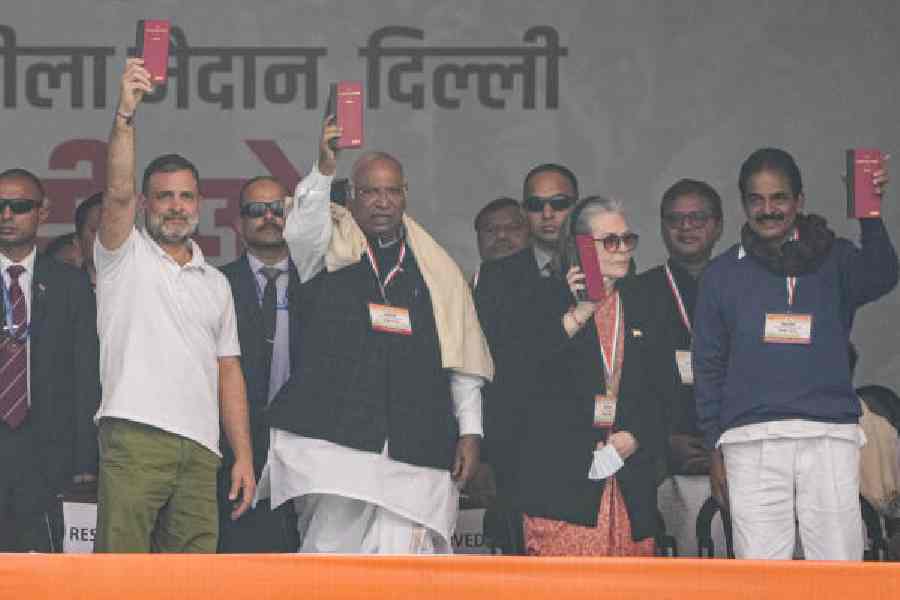Diwali, the Festival of Lights, is also a celebration of the autumn season. At this time of the year, nature blooms in reds and oranges. We take inspiration from nature for our decor during Diwali and flowers play a deeply sacred and symbolic role at this festival. They are not just decorative elements but offerings of devotion, purity, and life energy. Each blossom carries its own spiritual meaning — marigolds, with their golden hue, represent the sun and the power to dispel negativity; lotuses embody purity and divine beauty, often associated with Goddess Lakshmi herself; jasmine and tuberose bring fragrance and serenity, symbolising peace and spiritual grace.
During Diwali, decorating spaces with flowers is believed to invite positive energy, attract divine blessings, and awaken auspicious vibrations into the home. The bright colours mirror the flames of diyas, creating a seamless harmony between light, fragrance, and divine presence.
Thus, flowers during Diwali are more than adornments — they are symbols of rebirth, beauty, and the continuous cycle of giving and renewal, reminding us that true light comes from within, and it blossoms in hearts filled with gratitude and love. Here are some flower arragements that you can try at home this Diwali:
The Golden Garland of Lakshmi
This beautiful floral arrangement is a Diwali decor setup created to welcome Goddess Lakshmi — the harbinger of prosperity, purity, and abundance. Every element of this setup combines traditional symbolism with elegant artistry. At the heart of the arrangement are five golden lotus candle holders (diyas) suspended from a golden frame. Each diya represents one of the five elements — earth, water, fire, air, and space — illuminating the surroundings with divine light to invite positivity and prosperity. The garlands hanging gracefully from the frame are made of fragrant jasmine (mogra) and tuberose (rajnigandha) flowers, intertwined with vibrant red roses and small marigold blossoms to symbolise devotion, purity, and auspiciousness. The use of white flowers represents peace and purity, while red and orange add energy and celebration to the setting.
The green hanging section of the arrangement is made of leaves that have been artfully folded and shaped into drop clusters, forming the base of the hanging floral tassels. This adds structure and texture to the design, while the deep green colour enhances the natural contrast against the bright white and red flowers.
At the base, a rangoli pattern made with fresh marigold flowers in shades of yellow, and orange, and white flowers swirls gracefully around the pots. It not only grounds the vertical arrangement but also symbolises the sacred footprints of Goddess Lakshmi entering the home.
Vahana of Lakshmi — The Divine Owl and Shankh Ensemble
This design is a deeply symbolic creation, crafted to honour Goddess Lakshmi, who is traditionally depicted with her vahana (vehicle) — the owl (ulooka) — and accompanied by the sacred shankh (conch shell). It celebrates her arrival during Diwali, embodying prosperity, wisdom, and purity of heart.
The owl and shankh are elegantly placed on a base adorned with vibrant chrysanthemums and accented with golden beads, evoking the festive spirit of Diwali. The owl, a nocturnal creature, symbolises awareness amidst darkness. Beside it, the shankh (conch) signifies the primordial sound ‘Om’, resonating with purity, auspicious beginnings, and the cleansing of negative energy. Together, the owl and shankh create a harmonious balance between material abundance and spiritual wisdom.
Lotuses complete the composition, adding an intimate and sacred touch. As the throne of Goddess Lakshmi, they embody divine beauty, purity, and detachment, blooming untainted even in waters that are muddy.
Prakash Pushpa Diya — The Lamp of Blossoming Light
This magnificent creation embodies the warmth and radiance of autumn and the sacred spirit of Diwali, the festival that celebrates the triumph of light over darkness and knowledge over ignorance. The diya, a timeless emblem of purity and hope, is believed to invite Goddess Lakshmi — the bringer of wealth and divine grace — into every home. Its flame represents the eternal inner light within each soul, a reminder that even in darkness, faith and goodness continue to shine.
The floral diya at the centre has been lovingly handcrafted and placed on a vase using marigolds and cockscombs (Celosia) — flowers that perfectly capture the rich hues of autumn. The base and outer curves of the diya glow with layers of golden yellow and deep orange marigolds, symbolising abundance, joy, and auspicious beginnings. The inner flame is formed with orange marigolds, radiating warmth and spiritual energy, while accents of velvety crimson cockscombs add depth, passion, and a regal contrast. Together, they create the illusion of a flickering flame blooming from the heart of nature itself.
Surrounding the diya are floral globes composed of oases and pasted with marigolds and cockscombs in shades of amber, burgundy, and mustard yellow. Each sphere represents the cyclical beauty of nature and the five sacred elements: earth, water, fire, air, and ether. Elevated on golden metallic vases and rounded bases, these spheres form a rhythmic balance of colour and height, while slender twigs rise gracefully from among them, adorned with small orange marigolds like glowing embers suspended in the air.
The Artisan’s Dawn
A radiant celebration of colour, craftsmanship, and contrast — an arrangement that bridges the beauty of nature with the imagination of human artistry. The centerpiece evokes the freshness of an awakening morning, where every element seems poised to bloom with life.
At its heart lies a striking interplay of handcrafted tulip buds in vivid hues of sunflower yellow and fiery orange-red. Meticulously shaped from silk or fine cloth into perfect teardrop forms, these blossoms are nestled among fresh greenery and flowers. Their placement creates the illusion of a field of tulips at the brink of dawn, just moments away from unfurling in the first golden light of day.
Rising gracefully through and above these brilliant buds are the slender stalks of rajnigandha (tuberose). Their soft, natural beauty contrasts the vivid tulips below, symbolising serenity and grace within exuberance.
The arrangement is grounded by a rustic base crafted from the fibrous sheaths of khajur (date palm) leaves, lending an earthy texture and structural integrity. The rough, organic fibres juxtapose beautifully with the silken smoothness of the tulips and the delicacy of the tuberose, evoking the harmony between the handmade and the natural.
Together, these elements compose a multi-sensory tableau — a vivid narrative of dawn breaking over a field of blossoms, where colour, fragrance, and texture converge in perfect equilibrium.
The Serpent’s Rocket
In a captivating blend of creativity and tradition, this remarkable piece of decor reimagines the essence of Diwali through artful symbolism and natural materials. Aptly titled, the installation conceptually recreates a festive firecracker — an emblem of joy, triumph, and illumination — using flowers, foliage, and handcrafted design.
At the heart of this creation lies a dark indigo jute structure, elegantly shaped into a stylised, star-like rocket form with gentle curls that evoke motion and grace. Wrapped around its body are white chrysanthemums and red cloth is used to give the feel of fire, reminiscent of ceremonial malas, lending both festivity and reverence to the design. The structure’s bold dynamism comes alive through sharp, green Snake Plant leaves, fanning outward like stabilising fins, symbolising thrust, energy, and the spark of celebration.
Anchoring the rocket is a vintage green glass bottle, serving as a launchpad and grounding the arrangement with its timeless charm. Surrounding it, a shimmering bed of amber and ruby-red stones evokes the brilliance of sparks and embers — capturing the fleeting beauty of a firecracker’s glow in a sustainable, pollution-free form.
More than an aesthetic marvel, The Serpent’s Rocket carries profound meaning. Firecrackers, long associated with Diwali, represent the victory of light over darkness and good over evil, dispelling negativity and welcoming prosperity. This floral reinterpretation channels that spirit — without noise or smoke — celebrating the joy of illumination through art and nature.
Sunita Kanoria trained at Pushpa Bitan and is a judge for national-level flower arrangement contests. She currently utilises her time and talent as a floral decor demonstrator at various forums










